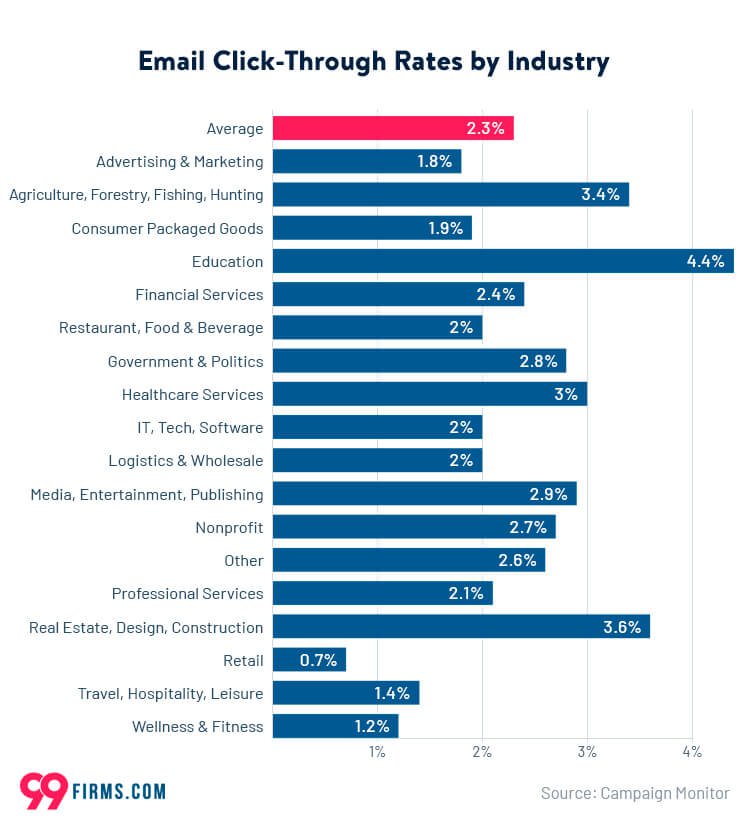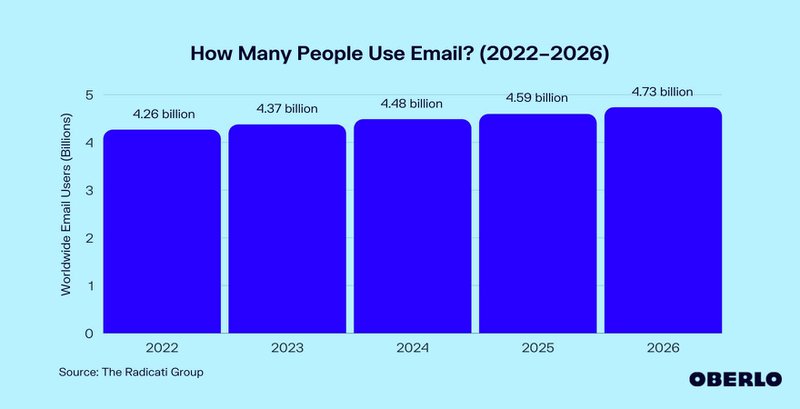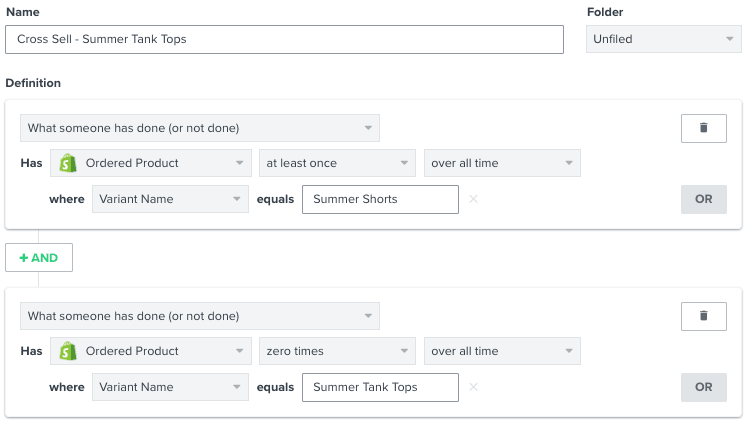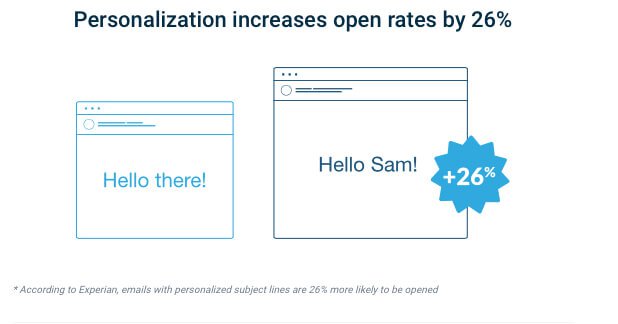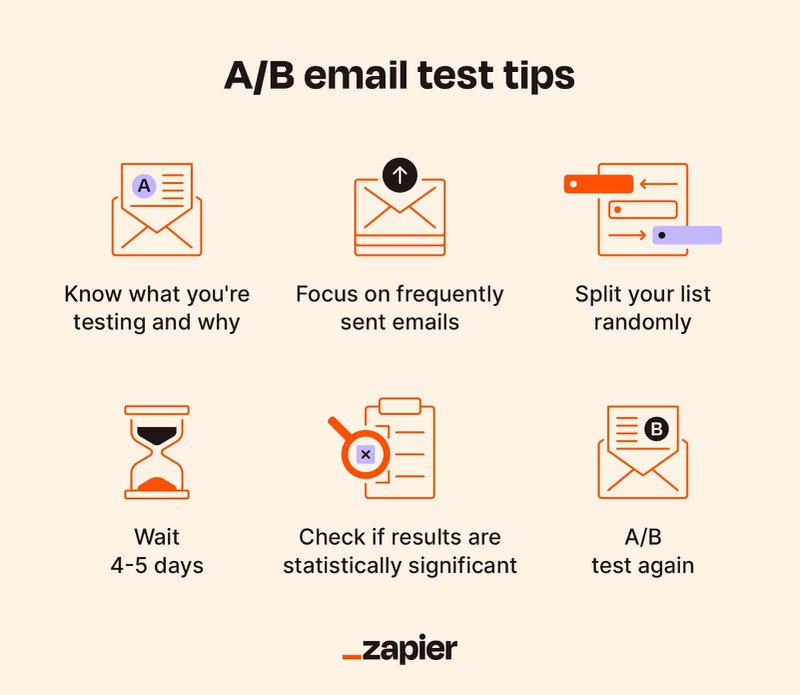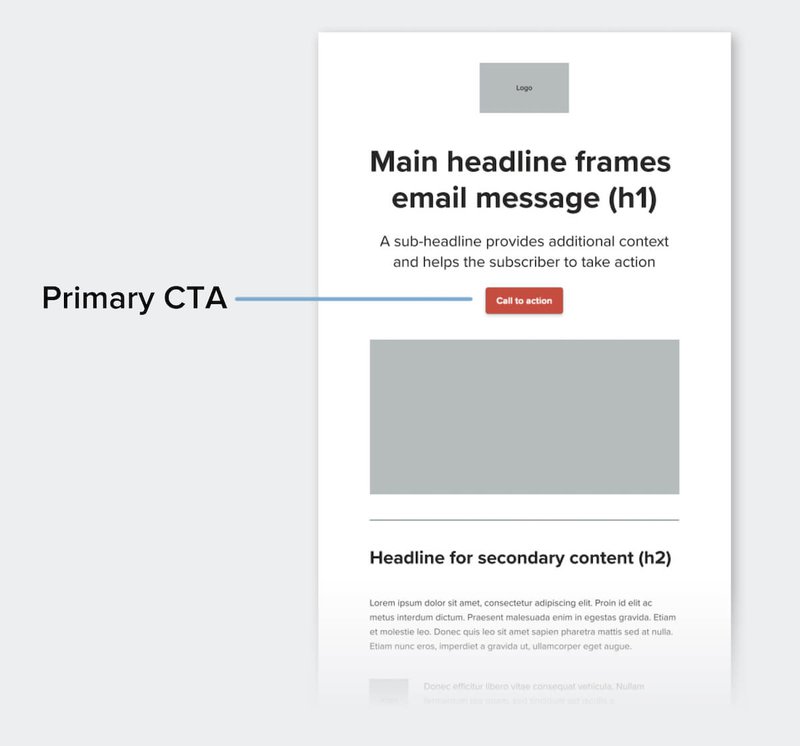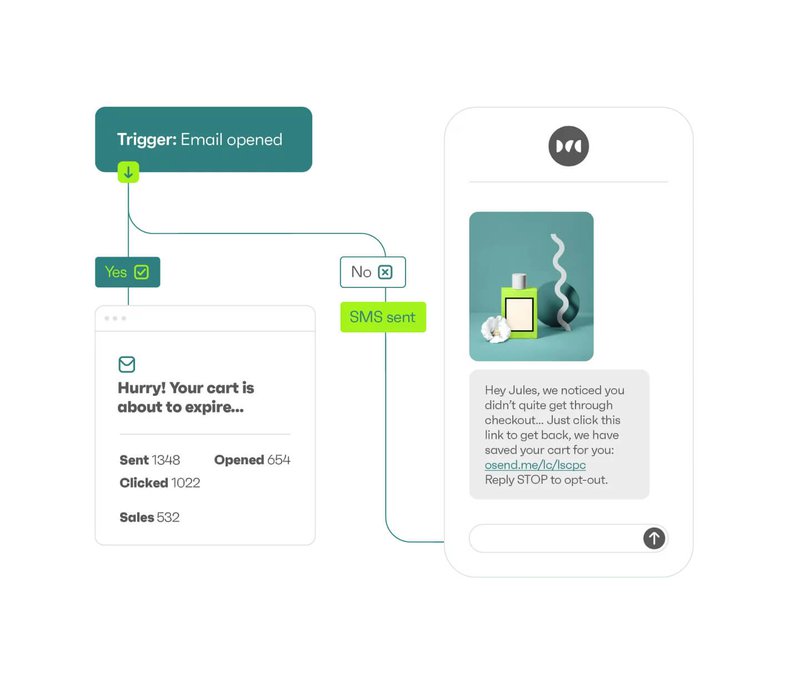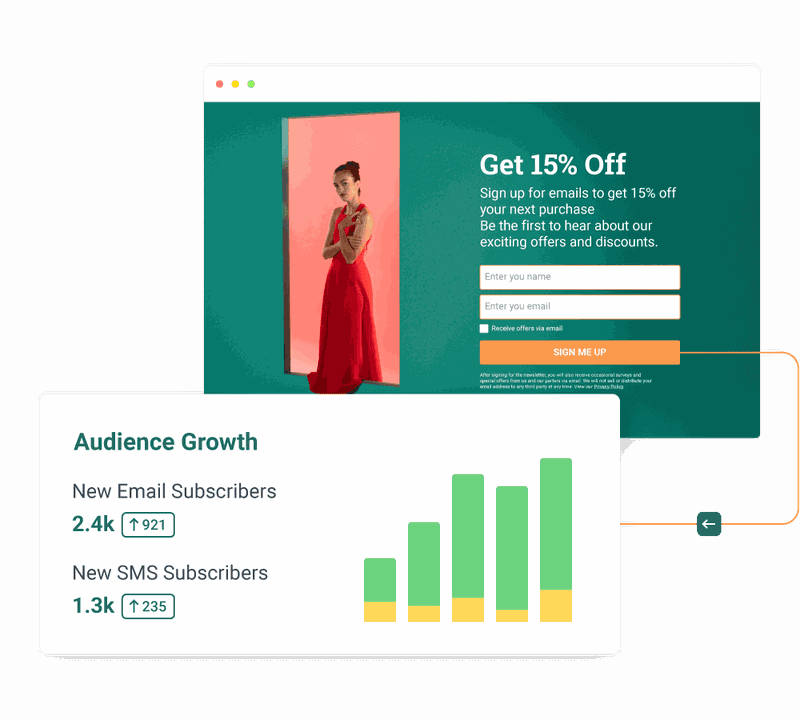What Is the ROI of Email Marketing? 9 Tips to Boost It for 2024
What is Email Marketing ROI, how to calculate it, and expert tips on improving it including CTA placement, personalization, SMS, segmentation, A/B testing.
Updated November 5, 2024.

As 2023 nears its end, the business landscape is experiencing challenges from all sides. After a two-year pandemic, the world is still adjusting to the new normal. We are seeing budgets slashed, increasing layoffs, and a looming recession is on everyone's mind.
Companies are looking to maximize their spend to yield the greatest return on investment. Email marketing comes out as the best dollar-for-dollar spend for all companies. In this article, we will break down what email marketing ROI is, how to calculate it and, more importantly, how to optimize it.
Let's dive in.
What is email marketing ROI?
The simple answer is: how much did you make per dollar spent on your email marketing campaign? The complex question, however, is around what costs are included when calculating your dollar spent amount.
Email marketing ROI is one of the best indicators of your email campaign's success or failure. It should always be part of your email marketing strategy as one of your tools.
ROI calculations can assist in justifying the spending on your campaign and also help to optimize future campaigns.
One important consideration is the need to look at the lifetime value of your campaign. Email marketing usually has a very short tail. When running a single email campaign, 99% of activity happens within the first 72 hours. Often, you may create multiple emails for a single campaign driver, such as the holiday season or annual holidays. In these cases, it is wise to report only after the final email has been sent as part of the campaign.
How do you calculate the ROI of email marketing?
Many of you will know this formula intimately, but for those who are unaware, want a refresher, or are just getting started, here is the core ROI calculation.
When looking to see if an investment is profitable, you need to see how much you made versus your initial investment and then divide that by your initial investment. For example, I bought 1,000 units of stock in Apple in 1983 at $1.25 a share for a total investment of $1,250. Today, I sold my stock at $175.01 a share, yielding a return of $175,010. Add this into the formula, and you get an ROI of 13,901%.
This means that for each dollar I invested, I received $139 back. This is an extreme example, but it shows you how powerful the value of using an ROI calculation is.
The ROI for email campaigns is calculated from the revenue gained from a campaign and the investment (cost) incurred. There is a debate, however, if the revenue generated should be the total revenue (gross revenue) or the total amount of revenue less the direct cost of goods (net revenue or gross profit). There is a subtle difference between the two. Many companies try to run a gross profit margin of 30%, but this differs per company.
To calculate the ROI of email marketing, use the following formula.
Above, I mentioned why net revenue vs. gross revenue matters. Many marketing departments will take into consideration the gross revenue of the campaign. This, in my opinion, inflates the ROI number and is misleading.
I believe that all ROI should always use net revenue as the base. There is a subtle difference between the two. If you use gross revenue, you will likely see high ROI numbers, but ultimately, this becomes a vanity metric. Using net revenue, which you will need your finance department to work out, you report an actual number truly representative of your ROI.
Net revenue includes the cost of goods sold, whereas gross revenue is the total revenue generated from sales. This is a critical nuance to understand. If you generate an ROI of 30% on your campaign based on gross revenue, you show the company that your campaign generated $0.30 per dollar spent. So if your campaign generated $9,100 in sales and your campaign cost was $7,000, your ROI is 30%.
However, your ROI is heavily impacted if your direct costs to generate that revenue are 88%. If you generate $9,100 in revenue, but the direct cost associated with that revenue is $8,020, the formula suddenly looks very different.
These direct costs are what it costs to make your product, not the overhead costs. Therefore, your net revenue on the above number is $1,080. This would result in an ROI of -84.87%, a loss of $0.84 per dollar you spent.
Another formula that looks even deeper into marketing costs is ROMI, which I recommend reading up on.
The ROI calculation is shown in three primary ways. A percentage, as is seen from the calculation above, a simple $x per dollar spent, or as a ratio. All three are correct, and you should choose the style that best suits your reporting purposes.
What's a good email ROI?
Research carried out by Litmus has shown that for email marketing across all industries, on average, every dollar invested yields a return of $36. Using the calculation above, an average ROI of 3,600% or a ratio of 36:1. There is no other marketing channel I can think of that shows this return.
Certain industries far exceed this average return. Tourism has the highest return on email marketing investment, with a whopping $53 per dollar spent (53:1). Other top-performing industries include media (45:1), retail, including eCommerce, (43:1), marketing and advertising (42:1) and software (40:1).
Here is some more data on click through rates by industry:
Email marketers must always aim for that 36:1 (or better) return on our campaigns.
In contrast, the ROI on other marketing channels is significantly lower. SEO is the next best-performing marketing channel, with a return of 22:1. Search Ads yield an ROI of 17:1. The worst-performing channel is display advertising, with a return of only 2:1.
Email marketing ROI stats
HubSpot reported that the email landscape in 2023 is growing exponentially and will continue to in future years. Here are three email marketing statistics that are super important to keep in mind.
1. There are over 4 billion daily email users
This equates to an estimated 93.7% of all internet users engaging with email every single day, and an estimated 347 billion emails are sent daily. This means that half of the global population is plugged into email every, single day. This statistic is trumped only by Google, which records 4.3 billion daily users.
2. 77% of marketers have seen an increase in email engagement over the last 12 months.
In part, this high number is because of the pandemic. Companies needed to be more creative in marketing as they had to slash budgets due to low or zero revenue. This pushed the marketing teams' boundaries, which has continued into 2023.
A successful email program requires clever segmentation, strong subject lines, creative images and copy, and a strong CTA. As more brands join the space daily, it's critical for you to understand how to improve your email engagement if you want to remain on top.
3. Smartphone users prefer to receive brand communications via email.
When designing email templates and the layout of your emails, you should always be thinking mobile-first. You must test your emails on mobile devices, preferably on multiple brands. Make sure that your emails are accessible.
This means ensuring your image sizes are small enough that when loaded on mobile, they are lightning fast, you have alt text to all your images, and your content layout is designed to suit most/all mobile devices. Do not compromise on these aspects—the success of your brand hinges on them.
How to increase your email marketing ROI
Now that you know what email marketing ROI is, how to calculate it and what is considered a good ROI, it is time to get your sleeves rolled up, grab a pot of coffee and get elbow-deep into how you can improve your ROI on every email marketing campaign you create.
Even as an email marketing professional with over 20 years of experience in this, I learn something new from each campaign I develop. I hone in on each campaign's needs through testing, creating quality content, and understanding my segments better. In addition, I work with both B2C and B2B brands, and every audience has differences, sometimes so small they can be missed.
Below, I have outlined some of my top tricks and tips to help you achieve that ROI of 36:1 and beyond for all your email marketing campaigns.
Build out your email analytics reports
Through rigorous reporting, you can monitor the performance of each campaign. Building a strong campaign reporting platform from the beginning is not a luxury. It is a necessity. You need to know what is working and what isn’t. From there, you can continuously optimize your email marketing strategy for the greatest success.
To increase your ROI, you need to know what you have done in the past that has resulted in a high ROI and build on that. Sometimes, you need to re-imagine your entire email strategy. This is not the worst thing in the world. You have an amazing list, so don't burn through it.
Segment your audience
I have experienced this countless times. I have often seen lists with 100,000 contacts in their database but no segmentation strategy. Everyone on the list is sent every single email every time. This results in low open and engagement rates and has been shown to increase the number of users unsubscribing from the list. Building strong segments is critical.
For example, let's say I'm a male customer who is interested in shoes. I lose confidence in a brand if I receive email marketing messages about women's shoes or dresses. I don’t feel heard by the brand. However, if I receive a marketing email with men's sneakers only, I am more likely to open, click, and potentially purchase them. Having this segmentation that understands the customer’s interests will lead to higher engagement and overall revenue.
Take the time to segment your audience. As a new brand, get this in place from the day you open. As an established brand, now is the time to survey your audience and build those segments.
Personalize your messaging
I cannot stress this enough. Sending personalized emails is critical. At the very least, you should greet people by their first name in the email. You should map the line in the email header so that the recipient is First Name and Last Name, not just the email address.
These may seem like small and somewhat insignificant points, but from a psychological point of view, they make a huge difference. This is just the start of personalization. Also, consider adding personalization to your subject line. More on this later.
If you have built a comprehensive list of merge tags, you have a depth of content that you can use. For example, if you know a person’s birthday, favorite color and favorite brand, you can send them a voucher that will allow them to purchase the product they have wanted but could never afford.
This level of personalization runs deep and directly affects the psyche of your subscribers. This is an example of B2C marketing. In a B2B situation, look at the date the client first purchased the SaaS and send them a personalized note on the anniversary of that day, thanking them for being such a loyal customer.
While some of these details will be in your email list by default, sometimes you must rely on an API connection with your CRM system and other items in your stack. This is one of the best investments to increase your ROI.
A/B test your email campaigns
Test, test, test, and then test again. This is a mantra that I run through every campaign. If you are a start-up, you can do as much testing as you like. I recommend testing your entire list in the beginning. Choose which campaigns to test or a specific segment if you are an established brand.
There are four primary items that you can test when A/B testing. However, you should only test one at a time.
- The subject line and the "from name" - are two good ways to get a higher open rate on your emails.
- Content changes - this includes all of your images, copy, and CTAs. Testing different types of content like UGC, videos, and influencer images is key to improving your click-through rate.
- Send time - once you have the results of the first three tests, I would recommend moving on to send time, as this will allow you to find the best time of day for your audience. While there are guidelines for the best send times according to your industry, every email audience is different.
Pro tip: you can also run multivariate tests, an advanced action. I recommend only looking into multivariate testing if you have already run successful A/B tests.
Improve your subject lines
Your subject line is your first impression. If you don’t grab a person’s attention in that first second, you will lose an open. Work on creating urgency and addressing a pain point without being spammy or misleading.
Research by Instapage shows that having exactly five words in your subject line can lead to a 15.9% increase in opens. Another key element is personalization in your subject lines. Subject lines with personalization led to an increase of 23.6% in open rates.
Interestingly, two common practices considered highly effective in the past are now seen to have a negative or minimal impact on open rates. Companies that don’t use pronouns in the subject lines can expect an increase of 52% in open rates compared to companies that use pronouns.
In the past, adding numbers and percentages to your subject lines was always considered high-performing. Recent research has shown, however, that there is only a 3% increase in opens between emails with numbers and those without.
Use a simple call-to-action (CTA)
Where your subject leads to opens, your CTA leads to conversions. Optimize your CTA so that you can maximize your click-through rate. According to Campaign Monitor, it's best to keep your CTA between two and five words and build the language around them to drive urgency. Encourage your audience to take action now, and use clear buttons.
Another key aspect is not to stuff your CTAs. This means there should be no more than one, and at most two under special circumstances, in one email. You need a unified message that leads to a landing page that your content has spoken of to boost your conversion rates.
Want more inspiration? Check out our guide on the best email marketing examples.
Lower your bounce rates
This is key, not only for email marketing ROI but for the general health of your list. Bounce rates are more likely to cause your account to have negative marks against it. You will also be paying for accounts that don’t exist. Be sure to run regular cleaning of your lists.
Mailchimp and other platforms automatically clean hard-bounced emails, and a soft-bounce policy to clean your contacts. If you are collecting emails at a trade show, work with new email subscribers so that they enter their details correctly.
Pro tip: look into your cleaned lists. A subscriber may just have entered the wrong syntax in their email address, and they do want to receive your emails.
Combine email with SMS
SMS marketing is growing in popularity and is crucial to boosting your email ROI. If you can create cross-medium messaging for your campaigns, your returns will increase. There are some key considerations when it comes to SMS. Most importantly, you need explicit consent from your subscribers to send them SMS campaigns.
Second, be aware that SMS campaigns add an extra cost to your investment. Sometimes, it may be a tiny portion of the investment, but this cost could impact your email ROI for smaller accounts.
Grow your email list
Growing a list can be challenging. Every industry has its main channels of acquisition. eCommerce is likely the easiest, as you can ask for permission to market to the client on checkout. In some B2B businesses, trade shows are the primary lead source.
For many, it is the website that captures new subscribers. No magic bullet will grow your list by 1,000% overnight. A strong acquisition strategy needs to be formulated by your marketing team, and follow-through on the execution is vital.
Time to capitalize on your email marketing and boost that ROI
So what have we learned? Calculating your email marketing ROI is critical to the success of all your campaigns. Using the formula I have provided in this article, you can prove to your senior leadership team that the investment they made in a lead-nurturing email campaign paid off.
Using the tips and tricks I have outlined above, you can optimize your campaigns and ensure you always hit or exceed the 36:1 average. And if you miss that number, at least you will know that you need to look into your campaigns more deeply.
FAQs
What is the average ROI for email marketing?
The average ROI for email marketing efforts is $36 for every $1 spent or 36x.
Does email marketing have a 4400% ROI?
According to some email marketing stats, the channel has an ROI of 4400% or 44:1. It still remains the most effective and personal form of communication with your audience.
Is email marketing still profitable?
Email marketing remains one of the most profitable digital marketing channels today but it does require brands to create relevant content, engage with their audience on a regular basis, and keep their email deliverability high to avoid the spam folder.
Why does email marketing have the highest ROI?
81% of small businesses rely on email as their primary customer acquisition channel, and 80% for retention because consumers still expect brands to email them. There are many things you can do with this channel to target potential customers across the customer journey, whether that's through cart abandonment campaigns, retargeting active shoppers, or boosting customer retention. Read more on the benefits of email marketing in our guide.


